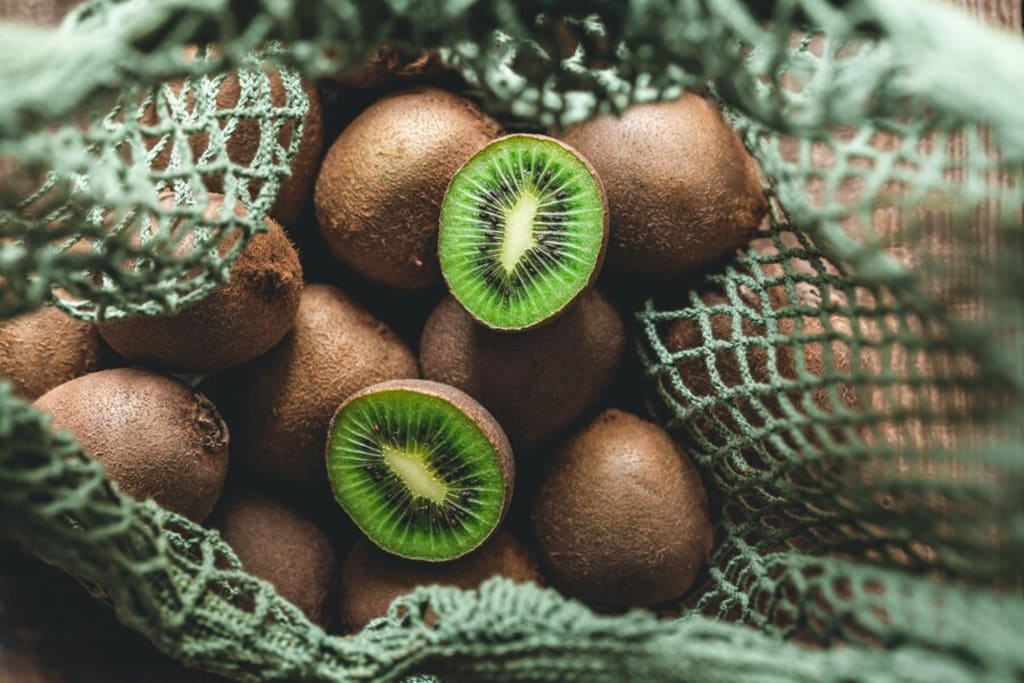Kiwi Fruit Farming
Types, Benefits, Cultivation Process and More

Kiwi fruit is quite famous for its vibrant green flesh, unique flavour, and high nutritional content. Because of all these qualities, it has gained immense popularity worldwide. Kiwi is originally from China. This small, sweet and tangy fruit is not just tasty but also rich in nutrients. It offers numerous health benefits. Its high vitamin C content, antioxidants, and fibre make it a must-have in a healthy diet.
In recent years, kiwi farming in India has become a profitable agricultural venture. With its favourable weather conditions and constant demand for exotic fruits, India presents a promising market for kiwi farming.
If you're interested in knowing about ' How to do Kiwi farming in India?', then you’ve come to the right place. This blog will provide you with all the information related to Kiwi farming in India, such as types, benefits, cultivation processes, etc.
Top Kiwi Varieties Cultivated in India:
Kiwi fruits are becoming very famous in India. Indian farmers are now cultivating several varieties of kiwi, each with its unique flavour and characteristics. Let’s check the top kiwi varieties which are cultivated in India.
- Abbott
- Bruno
- Allison
- Monty
- Hayward
- Tomuri
Leading Kiwi Growing States in India:
India is becoming a key player in kiwi production because of its favourable climate conditions. Let’s look at the leading kiwi growing states in India below.
- Himachal Pradesh
- Uttrakhand
- Jammu and Kashmir
- Sikkim
- Meghalaya
- Arunachal Pradesh
- Kerala
Why Kiwi Should be Your Daily Fruit Choice:
Kiwi fruit is not only delicious, it also offers various nutritious benefits. You can check its health benefits below.
- Good for health
- Can reduce hair fall
- Controls high blood pressure
- Helps regulate blood sugar levels
- Rich in antioxidants
- Rich source of Vitamin C
- Can treat asthma
- Good for gut health
- Helps in building bone mass
Kiwi Farming Processes:
These are some of the critical stages in kiwi farming to obtain delicious and healthy kiwi fruits. Some of the steps include climate requirements, soil preparation, plantation, irrigation, pest and disease control, harvesting and so on. Let’s check these processes in detail below.
Weather Conditions:
Kiwi can be grown in regions with relatively mild climates, with warm summers and cool winters. It needs a temperature between 15 °C and 25 °C. These plants also require shelter from frost and strong winds, which can damage them. They grow well in regions with a moderate level of rainfall. However, in regions with little rainfall, farmers should irrigate more.
Soil Preparation:
Kiwi plants require well-drained and fertile soil. First, the farmers should prepare the land by ploughing it properly to improve soil erosion. The best range for the various soil pH should be 2. 5 to 7. 0. Good soil preparation helps the roots grow strong.
For effective soil preparation, growers can use an Eicher 188 tractor. This is a highly versatile tractor, and farmers can easily attach a plow to it. Eicher 188 Price is also affordable for the farmers, so they can buy it without any worry.
Plantation:
Farmers should plant kiwi vines in early spring and keep them 3-4 meters apart. They should use strong support structures like trellises for the vines to climb. For pollination, they should plant both male and female vines, usually one male for every 5-8 female plants.
Irrigation:
Kiwi plants need regular watering, especially during dry times. Keep the soil moist but not too wet. Drip irrigation is good for keeping the moisture levels steady. Farmers can add mulch around the plants to help retain moisture in the soil.
Pest and Disease Control:
Common pests that can damage the kiwi plants are aphids, caterpillars, and spider mites. To keep off these pests, farmers should use organic insecticides or beneficial insects like ladybugs.
Root rot and powdery mildew are common illnesses that cause damage to the kiwi plant. Growers can prevent them by ensuring good air circulation, proper pruning, and avoiding waterlogged soil.
Harvesting:
Farmers should harvest the kiwis in late autumn. However, they should first check if the fruits are the right size and firm. Then, they should pick them carefully to avoid damage. Finally, kiwis should be stored in a cool, dry place. Properly harvested and stored kiwis can last for several weeks, providing fresh fruit well into winter.
To carefully transport this fruit, one can use an Eicher 333 tractor. It is a highly fuel-efficient tractor that can lift 1650 kg of weight. Eicher tractor 333 price starts from ₹ 5,55,000 and goes up to ₹ 6,06,000.
Conclusion:
Kiwi fruit farming in India is highly beneficial because of India’s favourable weather and soil conditions. Farmers can earn huge profits from it if they cultivate this green, ovular-shaped, nutritive fruit properly. They should follow all the above-mentioned steps to cultivate a profitable yield.
About the Creator
Rajendra_Singh
I'm a agriculture blogger, who loves sharing my knowledge about growing things. On my blog, you'll find practical tips and interesting stories to help you get started!
Enjoyed the story? Support the Creator.
Subscribe for free to receive all their stories in your feed.






Comments
There are no comments for this story
Be the first to respond and start the conversation.